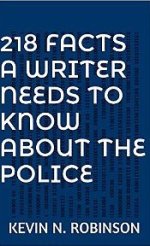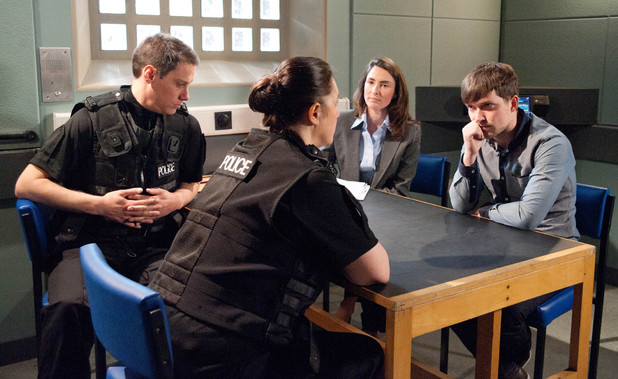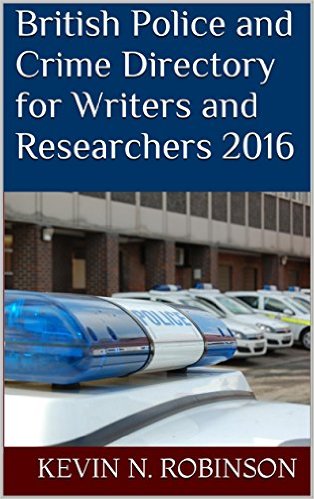Once in a while, a TV drama comes along that grips the nation. It may have been Happy Valley, Luther, Endeavour or The Bodyguard. The latest riveting watch just so happens to be the 5th series of The Line of Duty.
Are you one of 8 million viewers recently transfixed? How do you feel about it? Did it grip you and drag you reluctantly along from one Sunday to the next Sunday? How did you find the depiction of the police and their procedures?

The newspapers haven’t been slow in revealing what currently serving and retired police officers thought about the latest series.
The following had this to say to the Guardian:
I only ever watched one episode of Line of Duty and thought it so far-fetched I could not stand any more. My wife hated me constantly pointing out inconsistencies and banned me from watching any police dramas.
Peter Fahy, former Chief Constable of Greater Manchester Police
I have no clue who H is, but it can’t be Ted. He’s the sort of boss we’d all like to have – before he dropped himself in it. He’s supportive, wants to get the job done and is not afraid to get his hands dirty. But then there is this sort of dodgy business dealing that he’s been involved with. It’s a bit worrying, but I hope to see him emerge squeaky clean.
Chris Hobbs, former officer in the Met
I find it ironic that you never see this many minorities in specialist departments apart from in TV programmes like Line of Duty. I think it’s cynical, a marketing tactic where minorities are brought in to sell the programme.
I was a gold commander and a firearms operator. There is a scene where firearm officers are waiting at the warehouse, after a tip that the main gangsters are planning to steal from it. The team suddenly get another call and just leave – but it’s so clearly a distraction call. That would never happen in real life. You would always leave at least one officer to stay.
Dal Babu, formerly a gold commander in the Met
I was a detective superintendent in the Met’s anti-corruption unit, a role quite similar to Ted Hastings’. But I never came across any fridging – the practice of storing dead bodies in freezers – in my career.
I advise on the script for Line of Duty. My job is to help make the series appear authentic, in terms of the language used, the acronyms, the uniforms, what the cars look like and the kind of firearms officers have – things like that. Some officers say to me: “Why is it so negative?” I’d have a different spin on that. I’d say it shows that there is a dedicated force who are there to root corruption out.
It is a drama series not a documentary. But that’s the advantage of drama: if it was entirely accurate it would be far more plodding and less dramatic.
David Zinzan, script consultant, formerly a police commander
Line of Duty is great TV that hooks you in emotionally and intellectually. I have worked in professional standards departments and anti-corruption. With that experience, sometimes watching you can feel a bit affronted. Firearms operations and surveillance operations, the use of informants and undercover officers are so professionally managed with such a high level of accountability and scrutiny. You can’t help but think of your colleagues, who work hard in those units with great courage, and you sort of feel they are sold short.
But then you have to laugh at yourself and remind yourself that it’s fiction and entertainment and it keeps so many of us, including police, hooked.
Helen King, formerly an Assistant Commissioner at the Met
https://amp.theguardian.com/tv-and-radio/2019/may/03/it-keeps-us-hooked-police-have-their-say-on-line-of-duty
Meanwhile, the Daily Mail reports that Chief Superintendent Chris Todd who is the head of Professional Standards at West Midlands Police took to Twitter to answer questions from curious TV viewers.
The Chief Superintendent is responsible for teams who vet officers and staff, investigate complaints and misconduct and the counter-corruption unit, which is equivalent to AC-12 on the television series, much like Line of Duty’s Superintendent Hastings, played by Adrian Dunbar.
Rating the show five out of 10 for accuracy, the ‘real-life Hastings’ revealed that police procedures in the show, some of which have featured in every series, bear no resemblance to reality.
Lie one: Interviewing officers have to be one rank higher
For instance, officers being investigated for corruption do not have the right to be interviewed by someone at least one rank above them, even though this is standard in the show.
A common refrain in AC-12 interviews depicted in the show is that the officer being investigated has the right to be questioned by another who is at least one rank senior.
And in series four of the show DCI Roz Huntley’s police representative makes a point of asking that questions come from Ted Hastings, who is ranked higher than her, and not Jamie Desford.
However, Chief Superintendent Todd, West Midlands Police said they use the best investigator for the job regardless of their rank or grade.
However, if the investigation leads to misconduct proceedings then the chair of the panel must be at least one rank above the accused officer.
Lie two: Officers have to wear dress clothes for interviews
Officers suspected of being corrupt have been seen marching into their interviews with AC-12, wearing full dress uniform.
In Sunday’s episode, PC Maneet Bindra who tricked another officer into giving her his computer passwords in season four was interviewed, she arrived in full uniform.
‘They always get dressed up in dress uniform when being interviewed by AC-12. I strongly suspect people don’t do that,’ on Twitter user wrote.
‘Yes, that is way off the mark,’ Chief Supt Todd replied. ‘The only time people wear tunics these days is at formal ceremonies, awards etc.
The TV does like to put people in tunics, especially senior officers.’
In series four, Chief Inspector Hilton – who was killed off in the final episode – was also frequently seen in full uniform.
Lie three: Undercover officers make their own rules
In one episode, viewers saw undercover officer John Corbett gunning down bent cop Les Hargreaves, firing a shot at Steve Arnott and then breaking into the home of Ted’s wife Roisin Hastings, wearing a balaclava.
Confused by the rules, one Twitter user asked: ‘Are undercover officers ever permitted to commit serious offences (such as kidnapping, manslaughter, murder etc.) in order to ‘maintain their cover’?
Chief Superintendent Todd: ‘No, what you see here is for dramatic effect. They are police officers first and bound by the same principles of conduct.’
He also explained undercover officers ‘have to abide by the code of ethics and definitely don’t commit criminal offences as we often see happening in Line of Duty.’
He added: ‘Undercover work is a very specialist, and we can’t describe too much for risk of compromising tactics and the people involved.
‘But undercover officers (UCOs) are police officers first & still bound by the rules. The extent of behaviour in Line of Duty is exaggerated for dramatic effect.’
Lie four: Superintendents interview corrupt cops
Another point Chief Superintendent Chris Todd cleared up on Twitter on Sunday was around interviews depicted on the hit BBC show.
Almost every AC-12 interview seen throughout the five series of the show has been conducted by Superintendent Hastings.
However, in reality they would not be conducted by such a high-ranking officer.
Chief Supt Todd: ‘If the superintendent is conducting the interview, something has gone wrong with our staffing levels.’
Lie five: Anti-corruption teams are armed
In the dramatic series four finale, Hastings has a gun and shoots one of the balaclava-clad men who is holding a security guard hostage.
Meanwhile, series 3 ends with Kate running through the streets after corrupt cop DI Matthew ‘Dot’ Cottan, brandishing a machine gun.
Chief Superintendent Todd made a couple of mentions to the use of firearms during his question and answer session.
He said his own professional standards team is ‘not armed’ and said that the depiction of use of arms definitely takes away from the realism of the show
‘They use the proper acronyms and the proper references to regulations,’ he said.
‘But then they throw something ridiculous in like the Superintendent randomly having access to a firearm.’
Lie six: Police forces regularly investigate other forces
Another Line of Duty fan asked Chief Superintendent Todd if police forces often get involved investigating other units.
In series four another police force was brought in to continue investigating Roz Huntley’s case, Operation Trapdoor, while she was being looked at by AC-12.
Chief Superintendent Todd said this does happen ‘occasionally’ if ‘there is independence required beyond their own Professional standards Department.
‘This might be if public confidence would only be secured through such independence, but invariably the Independent Office for Police Conduct would direct that.’
Lie seven: CCTV is the most important evidence in all police investigations
Also discussed in the Twitter thread was the prevalence of CCTV in police investigations.
One person said: ‘TV Police shows love to portray CCTV as something of a magic wand when it comes to solving crimes. How frequently do you find recordings are actually vital to prove an individual’s innocence?’
Chief Superintendent Todd replied: ‘One of the biggest breakthroughs we have had in recent times is Body Worn Video.
‘This has negated many a mistaken or even malicious complaint. But it has also supported misconduct against officers through either public complaint or colleagues reporting inappropriate behaviour.’
He later added that CCTV ‘can be varied depending on distance, angles, lighting, quality of camera and equipment.
‘Consequently, it isn’t always as helpful as might be expected, but still it can be the crucial piece of evidence at times too. I’d rather have it than not.’
AC-12 often rely on CCTV footage to catch a corrupt officer. In series four the team spent hours tracking down video of Roz Huntley’s husband driving near Tim Ifield’s flat.
In the latest episode of series five Officer Fleming and the team relied on CCTV to know what was happening at the raid on the Eastfield depot.
Lie eight: Police officers all have cars for their own personal use
One Line of Duty fan replied to Chief Superintendent Todd saying he was amused that in police TV the ‘default for every marked car is to drive with blue lights’ on.
The top officer replied ‘And they all have vehicles for their own personal use 24/7’, before adding that he usually takes the bus.
Both DI Fleming and DS Arnott are often seen in unmarked cars, thought to be theirs to use whenever they like, during the show.
Lie nine: Anti-corruption police are always investigating major scandals
Several people asked how realistic the case load of AC-12 was, and if police forces’ really deal with such a high amount of ‘bent coppers’.
Chief Superintendent Todd put minds at rest and revealed that corruption isn’t as widespread as is portrayed on the show.
He said: ’Corrupt officers are very few and far between Line of Duty is the “midsummer murders” equivalent of professional standards work!’
Answering a similar question, he said: ‘It’s [corruption] very rare I’m pleased to say.
‘We had 65 allegations of misconduct per 1000 employees last year and the vast majority were minor misdemeanours. Not the sort of things portrayed in LoD in all but a small partial hand filling- not even a handful.
He later added: ‘I don’t have access to all data right now, but looking back since Christmas, we’ve seen 7 not proven cases, 7 dismissals, 2 final written warnings, 2 written warnings, 2 custodial & 1 driving ban.’
Lie 10: Professional standards teams are secretive and feared
In Line Of Duty the AC-12 office appears to be secretive and separated from the rest of the station, with only a select few officers appearing on the screen.
One person asked Chief Superintendent Todd: ‘Is your department as feared in your force as AC-12 with colleagues clamming up the moment you start investigating suspected misconduct?’
He replied: ‘No, we’re a really friendly bunch. The counter corruption unit is necessarily covert.
‘But the rest of the department is literally an open door, open plan environment and is vert welcoming, not like you see on Line Of Duty.’
https://www.dailymail.co.uk/femail/article-6927407/Police-Officer-separates-fact-fiction-Line-Duty.html
What errors or anomalies did you spot or what did you see that you’re not sure about? Drop me a line and we can discuss your thoughts

![235 CRIME FICTION Prompts and Answers to 59 Frequently Asked Questions by [Kevin N. Robinson]](https://m.media-amazon.com/images/I/515+wixGYgL.jpg)
![A Writer's Guide to Police Cells and Custody Procedures in the UK by [Robinson, Kevin N.]](https://images-eu.ssl-images-amazon.com/images/I/51Ujabif1LL.jpg)
![A Writer's Guide to Senior Investigating Police Officers in the UK by [Robinson, Kevin N.]](https://images-eu.ssl-images-amazon.com/images/I/511P4PJVr8L.jpg)

















 Echoes of Justice
Echoes of Justice


 Dan Forrester, piecing his life back together after the tragic death of his son, is approached in a supermarket by a woman who tells him everything he remembers about his life – and his son – is a lie.
Dan Forrester, piecing his life back together after the tragic death of his son, is approached in a supermarket by a woman who tells him everything he remembers about his life – and his son – is a lie.

 YOU LATER RELY ON IN COURT. ANYTHING YOU DO SAY MAY BE GIVEN IN EVIDENCE.
YOU LATER RELY ON IN COURT. ANYTHING YOU DO SAY MAY BE GIVEN IN EVIDENCE.